Sergeant Jim Elsener, U.S. Marine Corps – From Chicago to Da Nang…and Back
Sometimes in life we are presented with choices where the “right” choice is obvious. Sergeant Jim Elsener, U.S. Marine Corps, was given such a choice in January 1966. He could finish out his enlistment at Camp Lejeune, North Carolina, having served in the Marines with honor, and return to civilian life in the Midwest. Or he could choose a course that promised many unknowns. Jim chose the latter, and as the poet Carl Sandburg so eloquently expressed, that choice has made all the difference. This is Jim’s story.
Jim was born in Chicago, Illinois, in 1943. His father worked at the Douglas Aircraft Company’s assembly plant at what is now O’Hare International Airport. Having been born in 1912 and married with one son when the war began, Jim’s father wasn’t drafted until the very end of World War II. He never had to serve, though, because the war in Europe ended and he was no longer needed.
In 1947, Jim’s family moved to Battle Creek, Michigan, and later to Detroit, where his father worked as a floor covering salesman. In 1955, the family moved again to Jonesville, Michigan, a small town about 100 miles west of Detroit where his father and uncle entered the farm implement business. They stayed in Jonesville for all of Jim’s school years, frequently traveling to Chicago to visit family and friends. They still considered Chicago home.
Jim graduated from Jonesville High School in the spring of 1961. He enrolled at nearby Albion College, but after completing one unsatisfactory year, he enlisted in the Marines in July 1962.
Jim reported for boot camp at Marine Corps Recruit Depot (MCRD) San Diego. He succinctly sums up his experience there by saying “there was nothing warm and fuzzy about boot camp.” He did, however, have an exceptional junior drill instructor, Sergeant Johnny Adams. Jim and the other recruits respected him and, at the end of their training, agreed Sergeant Adams was a gifted leader and outstanding instructor.
After graduating from boot camp as a Private First Class (E-2), Jim went through infantry training at Camp Pendleton, California, and then radio school at MCRD San Diego, where he learned Morse Code. In June 1963, he received orders to his first permanent duty station, Communications Platoon, Headquarters & Service Company, 3rd Battalion, 8th Marines, at Camp LeJeune.
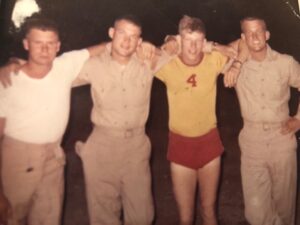
In December of that same year, Jim’s battalion deployed aboard ships to the Caribbean for a three-month tour of duty. Jim and his unit sailed on the USS Monrovia (APA-31), which had seen service during World War II and Korea. Ports of call were Guantanamo Bay, Cuba; San Juan, Puerto Rico; and Camp Garcia on Vieques Island, Puerto Rico, where they practiced amphibious landings, close air support, and basic infantry tactics.
In January 1964, Jim’s battalion was sent to the Panama Canal Zone for jungle training at Fort Sherman, a U.S. Army base. The first night in-country, anti-American riots erupted in Panama’s capital, Panama City. The battalion was ordered back aboard ship and docked at the Coco Solo Naval Base at the Caribbean end of the canal to provide security. They stayed there for two months, living aboard ship but practicing riot control techniques ashore. Despite the unrest, the battalion was able to finish its jungle training before returning stateside. History has tagged this period as the “beginning of the end” for U.S. control of the Panama Canal Zone.
In October 1964, the Second Marine Division, which included Jim’s battalion, participated in Operation Steel Pike, the largest peacetime amphibious landing in history. Over 28,000 U.S. Marines and Spanish military took part in the exercise along the southwest coast of Spain. Unfortunately, it got off to a bad start when two helicopters ferrying Marines ashore collided, killing nine and injuring thirteen. As Jim waited on the flight deck of the USS Okinawa (LPH-3) for his turn to board a helicopter to join in the landing, he could see smoke and flames from the crash even though he was five miles out to sea. Once ashore, Jim’s battalion held a field memorial service for their fallen comrades. The exercise continued for seven days. After it concluded, the USS Okinawa stopped in La Rochelle, France, and Plymouth, England, giving Jim and his fellow Marines some well-deserved liberty before returning to the United States.
In the spring of 1965, Jim’s battalion once again deployed to the Caribbean for a lengthy stay in Vieques, Puerto Rico, and then Fort Sherman in the Panama Canal Zone. Other ports of call were Guantanamo Bay, Cuba; San Juan, Puerto Rico; Barbados; and Kingston, Jamaica. This was the battalion’s third deployment in two years.

Shortly after his battalion returned to Camp Lejeune, Jim’s tour of duty with the 8th Marines came to an end. In July 1965, he transferred across the base to the 10th Marine Regiment, which provides artillery fire support to the infantry regiments of the Second Marine Division. When Jim reported to the 10th Marines, he had less than one year remaining on his enlistment. Being a relative “short-timer,” he was in a position to ride out the rest of his time at Camp Lejeune and transition back to civilian life in the summer of 1966. However, the war in Vietnam had begun to escalate rapidly, both in terms of U.S. troop involvement and intensity. In March 1965, the 9th U.S. Marine Expeditionary Force had deployed to Da Nang, a city located approximately 380 miles northeast of Saigon, to provide security for the airport. It was the first Marine combat unit in Vietnam and the Marine Corps needed more men to fulfill its expanding combat mission. To help achieve this, on August 20, 1965, the Marine Corps involuntarily extended the enlistments of Jim and other regular Marines for four months, which meant Jim would not be eligible for discharge until November 1966.
Because Jim now had adequate time on his enlistment to go overseas, he was offered an “opportunity” to take an all-expense paid trip to Vietnam. He had trained for three years to do his job as a Marine and had been promoted to corporal (E-4). As a non-commissioned officer (NCO), he felt an obligation to do his part in the war. So, in February 1966, Jim took leave to visit his family and then reported to Camp Pendleton for three weeks of intense training. He spent long days and nights in the field operating on little sleep, learning lessons that could save his life in Vietnam.
In March 1966, Jim boarded an Air Force C-141 “Starlifter” transport jet and crossed the Pacific, stopping to refuel on Wake Island and finally landing on Okinawa. A week later, Jim and the other Marines deploying as individual replacements loaded onto an Air Force C-130 “Hercules” transport for the six-hour flight across the South China Sea to Da Nang.
Upon arrival in Da Nang, Jim was assigned as a radio operator with the 1st 8-Inch Howitzer Battery of the 12th Marines. At the time, the unit consisted of 8 officers and 200 enlisted Marines who manned and fired the powerful M115 8-inch howitzers. These big guns, known as the “King of Battle,” could hurl 200-pound high-explosive projectiles to targets located as far as fourteen miles away. Jim felt the earth shake every time one of the howitzers fired.
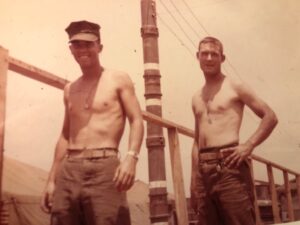
While Jim was with the battery, the unit occupied three different fire bases, all within approximately ten miles of Da Nang. Several guns and crews were also deployed with Marine infantry units operating from fire bases deeper in the countryside.
Because Jim was a radio operator, he was assigned as the driver for the battery’s commanding officer (CO), Major Paul Wilson, a crusty Mustang (enlisted Marine who became an officer) and veteran of the Korean War. Each day Jim and Major Wilson visited the battery’s various firing positions to check on the guns and their crews. They also searched for new firing positions across the Da Nang tactical area of responsibility (TAOR). On May 1, 1966, Major Louis J. Cavallo, an ROTC graduate from the University of Maine and also a Korean War veteran, assumed command of the battery and kept Jim on as his driver. Jim especially admired Major Cavallo and thought he was a terrific leader.
Though Jim’s jeep had reinforced metal plates on the floor to protect against explosive devices, on many mornings Jim and his CO had to wait for engineers to clear the roads of mines before they could proceed. Often, they found themselves alone searching for new firing sites, which required them to be extra alert for trouble. On one occasion, they heard a bullet whiz by and saw it hit the road just in front of the jeep. Jim stepped on the gas and got out of there.
Jim experienced enemy fire another time when his fire base was probed by the enemy one night. When the shooting started, Jim was off duty. He jumped out of his sleeping quarters into a nearby sandbagged bunker and saw the hot end of an automatic weapon firing in his direction. The Marines at the closest guard post opened fire and silenced the enemy weapon. The unit then called in “Puff the Magic Dragon,” a fixed wing gunship operated by the U.S. Air Force to provide close air support for ground troops. “Puff” shot up the area outside the fire base, putting an end to any Viet Cong (VC) in the area.
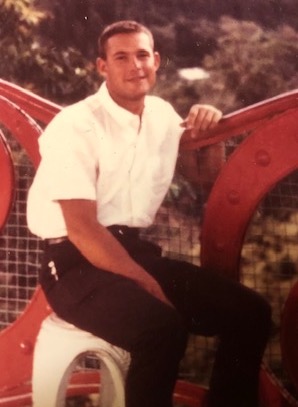
Life as a driver also had its perks. One day, Jim drove Major Cavallo to pick up two Red Cross “Donut Dollies” who were assigned to the battery. These young women had volunteered to support U.S. servicemembers in Vietnam by socializing with the men, playing cards and other games, telling jokes, and just trying to help maintain their morale while all were serving so far from home. Jim said it felt like a high school double date when they picked up the women in Da Nang. Jim drove, with one woman sitting in the passenger seat, while the Major and the other woman scrunched into the back next to the radio. At the fire base, the women ducked for cover when they first heard an eight-inch howitzer fire but were reassured when they learned it was outgoing – not incoming.
Besides his duty as the CO’s driver, Jim stood regular radio watches in the Fire Direction Center (FDC). The battery was always involved in direct support of Marine units engaged with the enemy or nighttime harassment and interdiction, known as H&I fire. Forward observers in the field would call in fire missions to Jim and the other radio operators, who would relay the firing coordinates and specifications (type of explosive, target adjustments, and number of rounds to be fired, as well as after action reports) to the FDC crew. The FDC crew would, in turn, prepare and communicate specific firing instructions to the gun crews via land line. It was crucial that all the information be passed accurately at every point of the communication trail.
Often, the Marine forward observers communicating with Jim would whisper into their radio handsets, reflecting their proximity to enemy forces. Sometimes all the forward observer could do was click the microphone to acknowledge message receipt because speaking was too dangerous. The fact that there were Marines in the field whose lives depended on him was never lost on Jim. He realized that even a small error in relaying the target coordinates could cost American lives.
Jim also often went on patrols around the perimeter of the fire base and in nearby villages searching for signs of enemy activity. And he and his fellow Marines fought a constant battle with the humid tropical environment trying to keep their weapons clean. If he didn’t give his M14 rifle a thorough cleaning almost every day, it would begin to rust—a grave sin for any Marine.
Jim was promoted to sergeant (E-5) in September 1966. The following month, he enjoyed R&R (rest and relaxation) in Hong Kong. That trip stands out in his mind because he recalls sitting in the lobby of his hotel reading a newspaper and learning the Baltimore Orioles had swept the Los Angeles Dodgers in four games in the 1966 World Series.
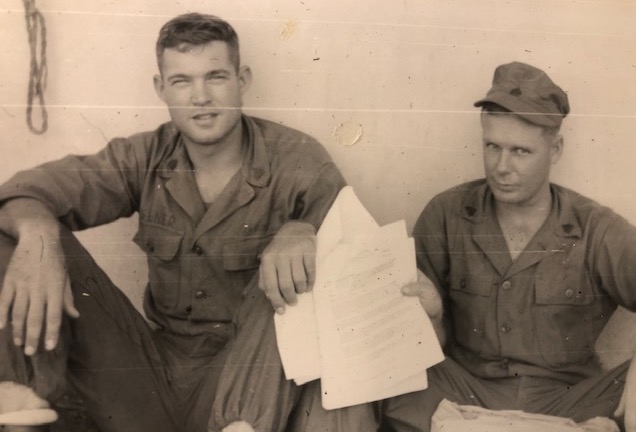
By December 1966, Jim had only one month left on his enlistment. Friend and Company Clerk, Sergeant Bob Snead, told Jim he could cut orders to get them both home before the holidays. Sergeant Snead was good to his word and the two men detached from their unit and headed to the Da Nang terminal to catch a flight to the United States via Okinawa.
As had happened when Jim arrived in country, the veterans getting ready to leave Vietnam began shouting warnings at the new troop arrivals disembarking from the airplane Jim would take on its return trip to Okinawa. This time, Jim was one of the NCO’s ordering the veterans to knock it off rather than being on the receiving end of their taunts. Jim departed Vietnam on December 10, 1966, after having spent eight months and twenty-two days in country.
On December 13, Jim left Okinawa on a chartered Continental Airlines flight bound for the United States. His journey ended at El Toro Marine Corps Air Station, where he received his Honorable Discharge on December 20. He had served four years, five months, and five days on active duty. Jim and Bob Snead then spent two days in Las Vegas “decompressing” before returning to their homes in time to spend Christmas with their families.
In January 1967, Jim drove to Los Angeles where he found work as a lineman for the telephone company. Although he enjoyed the job and the California lifestyle, he moved back to Michigan in the fall of 1967 to attend Western Michigan University using his GI Bill benefits. This time he excelled at college, graduating in 1970 with a degree in communications.
Jim’s first job was with the City News Bureau of Chicago, where he worked as a reporter and editor covering federal and state courts, politics, and the police beat. Two-and-a-half years later, he was hired by the Chicago Tribune, where he worked for five years as a general assignment reporter and covering politics and business. It was during this time that he met his future wife – Patricia, also a Tribune journalist.
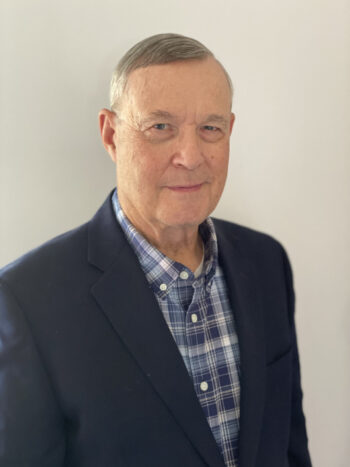
In 1975, the Tribune sent Jim to study for a year as a Knight-Bagehot fellow at the prestigious Columbia University School of Journalism in New York City, where he studied business, economics, and finance. After returning to the Tribune, Jim specialized in covering economics and the energy industry. He spent three weeks in Alaska reporting on the construction of the Trans-Alaska oil pipeline, which was the major economic and environmental story of that era.
Jim left the Tribune in 1977 to manage a national newspaper trade association and in 1992, he and his wife started their own regional business publication. They sold the company fifteen years later to a local daily newspaper. He stayed with that company for seven years before retiring in 2017. During the span of his forty-two-year journalism and publishing career, he served as a reporter, columnist, editor, publisher, sales manager, and association executive.
Although Jim’s newspaper days are behind him, his writing continues. In August 2018, he published his first novel, The Last Road Trip, about a major league baseball player trying to figure out what comes next after his baseball playing days have ended. In June 2021, he released his second novel, Reflections of Valour, a story of untested lovers from opposite backgrounds during the tumultuous early days of the Vietnam War. The book is equal parts a love story and a soldier’s story at war, and is a fictionalized autobiography of Jim’s time in the Marine Corps. The story uses the Vietnam Memorial Wall as an important backdrop. Jim’s third book, a murder-mystery, is currently in the works. You can learn more about Jim on his author website.
Voices to Veterans is proud to salute Sergeant Jim Elsener for his distinguished service in the Marine Corps and in Vietnam. Whether conducting exercises off the coast of Spain, guarding the Panama Canal Zone, or helping to direct artillery fire on enemy positions near Da Nang, Jim served with distinction and answered our country’s call. We thank him for his years of service and wish him fair winds and following seas.
If you enjoyed Jim’s story, please sign up for the Voices to Veterans Spotlight monthly newsletter by clicking here. Once each month, you’ll receive a new written veteran’s story and a new podcast directly in your mailbox. Best of all, it’s free and you can unsubscribe at any time.

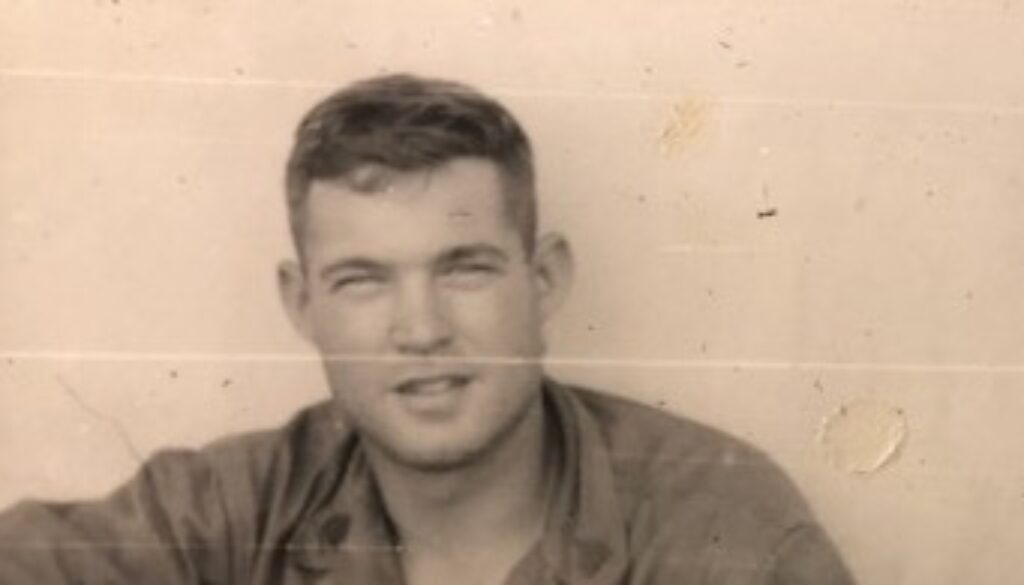

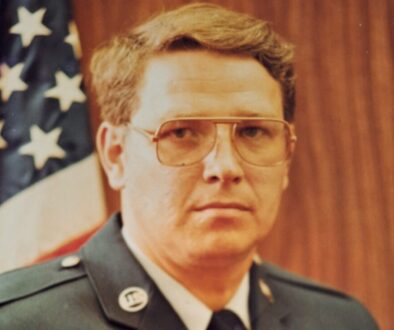

January 4, 2022 @ 2:11 PM
Great story Jim. Thank you for your service to our country. And looking at photos of you when you were younger, I swear those were photos of Sam.
January 4, 2022 @ 4:38 PM
Larry – thanks for taking the time to read Jim’s story.
January 4, 2022 @ 4:58 PM
You did a great job David. I’ve known Jim for a long time. I knew he served in the military but didn’t know a lot of the history or his personal experiences while serving.
January 8, 2022 @ 8:30 AM
Thanks Larry – I appreciate the feedback. Jim’s got a great story!
January 10, 2022 @ 3:01 PM
I have known Jim for 38 years but never knew his story. Thanks David for getting the story of his service to our country revealed. And thank you, Jim
January 11, 2022 @ 8:04 PM
John, Thanks for taking the time to read Jim’s story!